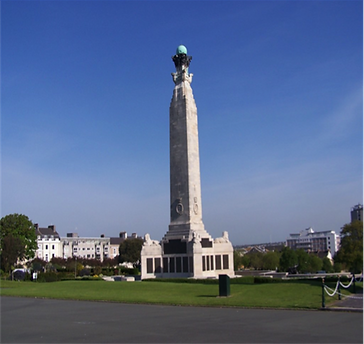WELCOME TO IMMANUEL
AT THE HEART OF THE FENISCOWLES AND PLEASINGTON COMMUNITY


AB JOHN HAMER

John lived at 20 East Street for most of his life,
however he was born and lived at 209 Dumers Lane, Radcliffe until he was two.
His Parents Absalom and Ann were married in 1892 at the parish church, St Mary and St Bartholomew’s, which was just down the road. Absalom was unusual in that he was born in Somerville near Boston, Massachusetts. John’s grandparents had emigrated and his father and two aunts were born there but when his grandfather died at an early age his grandmother returned with the children to Lancashire.
Absalom worked in the local paper mill in Radcliffe and they had two children Alice and John. When John was two they moved to Feniscowles where Absalom carried on his trade and worked in the paper mill as a beater man. They must have had a reasonable happy time in Feniscowles because Absalom and Ann went on to have another three sons, Henry, William and Samuel.
The children would have gone to school at the newly opened Feniscowles School on Livesey Branch Road. He would have stayed in education until he was twelve and then followed his father and sister and worked in the paper mill. He might have been a half boy, doing half days at school and half day at work, but by the age of fourteen he was working full time using a cutting machine at the mill.
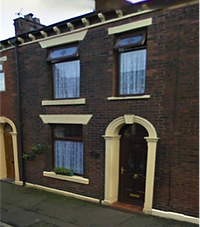

When war broke out in 1914 he was still at the mill and shortly after his eighteenth birthday he went off to join the Royal Navy and was enlisted at Plymouth on 13th May 1915. He was 5’ 6¾‘’, had brown hair, grey eyes and was of fair complexion. His basic training was six weeks at HMS Vivid which was the shore base at Devonport, now HMS Drake.
Here John would have learned basic seamanship such as the difference between port and starboard, drill, what a marlin spike was, what is a dog watch, how to keep yourself and kit clean, firing a rifle and how to wear a gas mask. On completion of his basic training he was sent to Rosyth to join HMS Indefatigable which was a battle cruiser and part of the Grand Fleet most of which where harboured up at Scapa Flow.
She was a fairly modern ship built in 1909, displaced 22,000 tons ,590 feet long, 80 feet wide, speed 25 knots and a crew of 1019 men. She was armed with eight 12” guns plus other smaller guns and torpedoes. While onboard his training continued and on 3rd February 1916 he became an Able Seaman and his pay would have been eleven shillings a week plus free board and uniform.
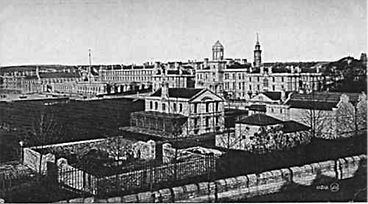
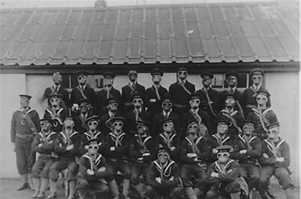

The Battle of Jutland
On 30th May 1916 the Royal navy intercepted German radio signals and learnt that their fleet was coming out into the North Sea with the intention of engaging the smaller battle squadron who were blockading the German harbours. So the Grand Fleet set sail from Scapa Flow and headed over the North Sea to engage them.The German plan was to use their fast scouting group of five modern battle cruisers to lure the Royal Navy’s battle cruiser squadron into the path of the main German fleet.
On the afternoon of 31 May, at 3.30pm the Germans spotted the British cruisers and ten minutes later the British spotted them. Both sides closed on each other and at 3.48pm and a range of ten miles the battle commenced. In a running battle, in which Indefatigable was tasked to engage the Von der Tann the Germans successfully drew the British squadron into the path of their High Seas Fleet. By the time the British had spotted the trap and turned back towards the main British fleet, they had lost two battle cruisers, the Invincible and the Indefatigable.
Around 4.00, Indefatigable was hit around the rear turret by two or three shells from the German cruiser Von der Tann and her aft magazine exploded. She fell out of formation and started sinking towards the stern. At 4:03 after more hits, one on the forecastle and another on the forward turret, her forward magazine exploded and smoke and flames gushed from the forward part of the ship and large pieces were thrown 200 feet into the air. Von der Tann had fired fifty-two 11’’ shells at Indefatigable before she exploded.
Of her crew of 1,019, only two survived.
The Royal Navy’s Grand Fleet engaged the German High Fleet just as night was falling and over 250 warships were involved. The German fleet wasn’t expecting this and run for home escaping under cover of darkness.
At daybreak on the 1st June, 14 British and 6 German ships had been sunk with 6,000 British and 2500 German sailors losing their lives. The German fleet never left port again until the war was ended.
John went down with his ship and his body was never recovered. He is remembered on three memorials, Immanuel Church, Unsworth Memorial in Bury and the Royal Navy memorial at Plymouth
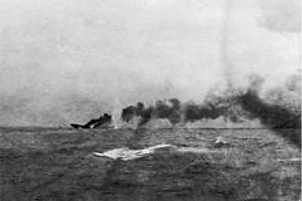
John went down with his ship and his body was never recovered. He is remembered on three memorials, Immanuel Church, Unsworth Memorial in Bury and the Royal Navy memorial at Plymouth
